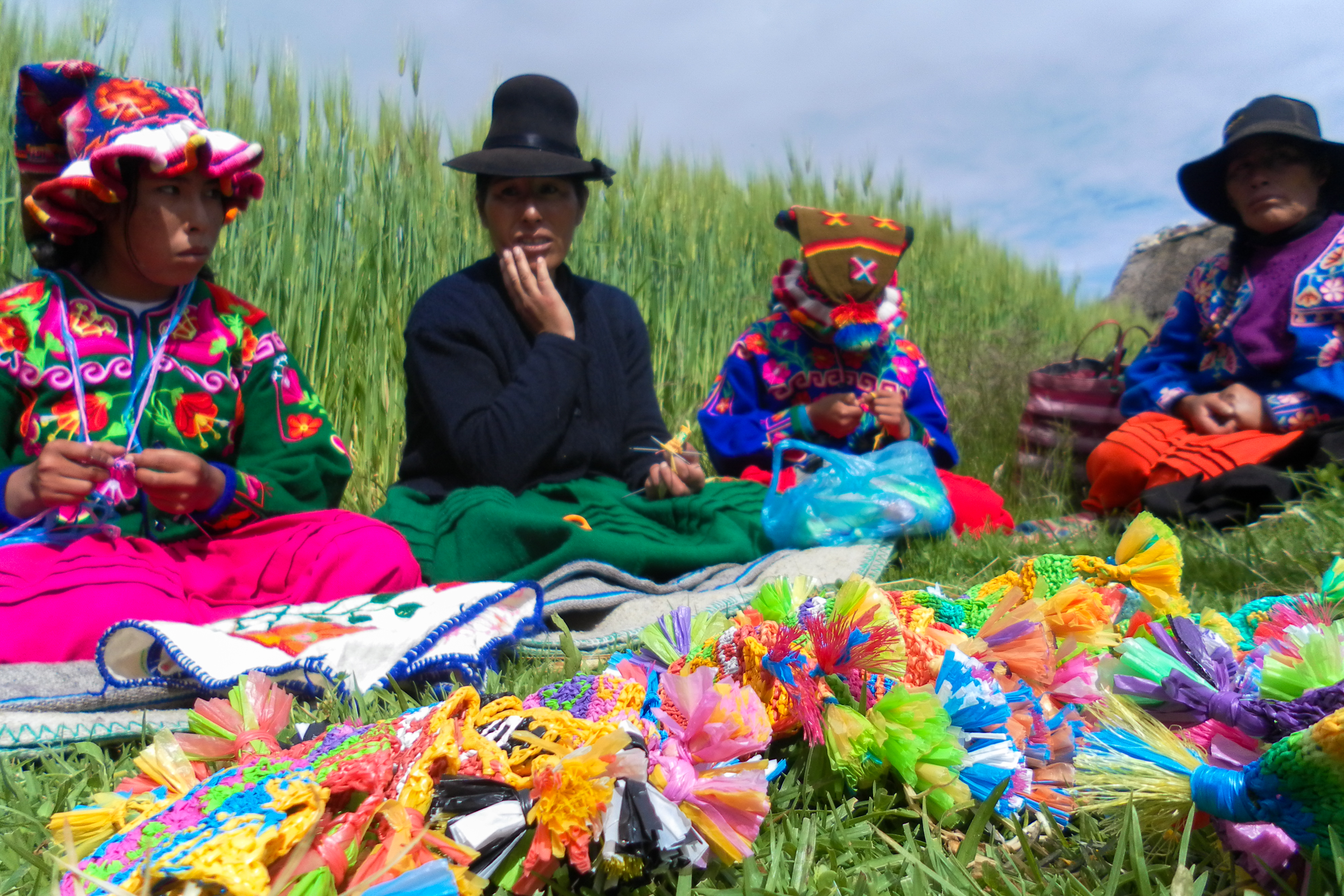PLASTIC WIPHALA
Part of the Smithsonian Artist Leadership Program︎

Plastic Wiphala
︎2012
︎Recycled Plastics
The word Wiphala comes from the Aymara language. “Wiphai” is a triumph exclamation, and “Laphaqi” is when the wind moves an object and it makes a movement such the waiving of a flag. The combination of these 2 words makes up the word Wiphay-Lapxi, therefore Whipala.
It also represents the indigenous wisdom inherited from Andean peoples, which symbolizes the principles of Pachakama (universal order) and Pachamama (mother, cosmos) which is space, time, energy and our planet and of the transformation of natural environments into harmony with human beings.
La palabra Wiphala proviene de la lengua aymara. “Wiphai” es una exclamación de triunfo, y “Laphaqi” es cuando el viento mueve un objeto y éste realiza un movimiento como ondear una bandera. La combinación de estas 2 palabras forma la palabra Wiphay-Lapxi, por lo tanto Whipala.
También representa la sabiduría indígena heredada de los pueblos andinos, que simboliza los principios de Pachakama (orden universal) y Pachamama (madre, cosmos) que es el espacio, el tiempo, la energía y nuestro planeta y de la transformación de los ambientes naturales en armonía con los seres humanos.
The upper part of the wiphala represents the sun, the day, while the bottom, the moon, the night. The meaning of the colors:
Red: the planet Earth (aka pacha) It is the expression of the Andean man, the intellectual development and the cosmic philosophy
Orange (Quillu Chupica): it represents society and culture. It is the expression of culture, conservation and procreation of the human species; it is health and medicine, it is youth education.
Yellow (Quillu): it is the expression of energy and strength (cha’ama pacha), of moral principles, it is the doctrine of duality (chacha Wami), it is Pachakama and Pachamama; the set of laws and regulations to follow such as brotherhood and human solidarity.
White (Janq’u): it means time and dialectics (Jaya Pacha), the development of science and technology, arts, intellectual and manual work that generates reciprocity and harmony within the structure of the community
Green (Chuxña): the color of hope that represents the economy and production of the Andes, the natural resources of the soil and the subsoil, the flora and fauna
Blue (Larama) : cosmic space, water, the infinite (alax pacha), is the expression of star systems and natural phenomena
Violet: it is the color of harmony; therefore, it represents Andean politics and ideology. The good administration of the state as a superior instance of social, economic and cultural organizations aimed at obtaining benefits for all.
The Plastic Wiphala was made as a part of my participation in the Smithsonian (NMAI)National Museum of the American Indian’s Artist Leadership Program (ALP).




Lorem ipsum dolor sit amet, consectetur adipiscing elit, sed do eiusmod tempor incididunt ut labore et dolore magna aliqua. Eros donec ac odio tempor orci dapibus. Massa vitae tortor condimentum lacinia quis vel.



SMITHSONIAN NMAI
Artist Leadership Program
︎
Smithsonian NMAI,
Artist Leadership Program
︎2012
︎Recycled Plastics
The National Museum of the American Indian’s (NMAI) Artist Leadership Program (ALP) for Individual Artists enables indigenous artists to research, document, and network in Washington, D.C., then return home empowered with new artistic insights, skills, and techniques to share with their communities and the general public the value of Native knowledge through art. The program aims to rebuild cultural self-confidence, challenge personal boundaries, and foster cultural continuity while reflecting artistic diversity.
The program’s primary objectives are for individual indigenous artists to focus on artistic processes while researching the vast collections of the Smithsonian Institution (SI); meet and consult with staff at SI and other arts organizations; participate in a public art panel discussion, speaking as voices of authority on their art; break down stereotypes about indigenous art; and, through a personal artistic narrative, speak to social justice issues and current events important to indigenous communities.
The program’s secondary objectives include to mentor young artists in collaboration with elders; convene local artists for networking and to share ideas and resources; affirm that indigenous arts hold value and knowledge; and through indigenous arts, offer communities a means for healing and new ways to exchange cultural information.
︎︎︎ See Smithsonian Folk Life Festival Article

El Programa de Liderazgo Artístico (ALP) para Artistas Individuales del Museo Nacional de los Indios Americanos (NMAI) permite a los artistas indígenas investigar, documentar y establecer contactos en Washington, D.C., y luego regresar a casa fortalecidos con nuevos conocimientos, habilidades y técnicas artísticas para compartir con a sus comunidades y al público en general el valor del conocimiento nativo a través del arte. El programa tiene como objetivo reconstruir la autoconfianza cultural, desafiar los límites personales y fomentar la continuidad cultural al tiempo que refleja la diversidad artística.
Los objetivos principales del programa son que los artistas indígenas individuales se centren en los procesos artísticos mientras investigan las vastas colecciones de la Institución Smithsonian (SI); reunirse y consultar con el personal de SI y otras organizaciones artísticas; participar en un panel de discusión sobre arte público, hablando como voces de autoridad en su arte; romper con los estereotipos sobre el arte indígena; y, a través de una narrativa artística personal, hablar sobre temas de justicia social y eventos actuales importantes para las comunidades indígenas.
Los objetivos secundarios del programa incluyen orientar a artistas jóvenes en colaboración con los mayores; convocar a artistas locales para establecer contactos y compartir ideas y recursos; afirmar que las artes indígenas tienen valor y conocimiento; y a través de las artes indígenas, ofrecer a las comunidades un medio de curación y nuevas formas de intercambiar información cultural.


